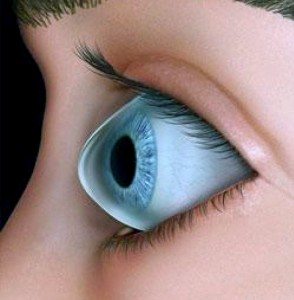Keratoconus
The middle of the cornea thins and gradually bulges outward producing increasing astigmatism, blurriness, possible swelling and scarring of the corneal tissue. It generally starts in adolescence and progresses into middle age. Possibly inherited but may also be related to allergy, eye rubbing, eye injury, eye disease or systemic (affecting a number of organs or the whole body) disease. Keratoconus is correctable with glasses or soft contact lenses but as the disease progresses, rigid gas permeable contacts may be needed or a corneal transplant.
Corneal Dystrophies
Bilateral, inherited and generally progressive corneal disorders showing no signs of inflammation and do not affect other parts of the body but may affect different layers of the cornea.
Some examples of dystrophies:
- Map Dot Fingerprint Dystrophy — Also known as Cogan’s Dystrophy, it affects the superficial cornea layer (epithelium). Microscopic dot and fingerprint-like patterns form within the layers of cornea. The cells become thickened and uneven which weakens the bond between the cells. Symptoms vary widely in severity and may include light sensitivity, glare, fluctuating and blurred vision, irregular astigmatism and mild to extreme irritation. Treatment (dependent on severity) includes artificial tears, ointments, gas permeable contacts or laser treatments.
- Lattice, Granular and Macular Dystrophy — Opacities located within the stroma or middle layers of the cornea. In some people, these abnormal opacities may cause erosion of the outer layer of the cornea altering the cornea’s normal curvature resulting in vision problems and exposing the nerves lining the cornea causing severe pain while blinking. Eye drops and ointments are prescribed to reduce the friction or an eye patch to immobilize the eyelids. If deeper it may cause blurred or decreased vision. If scarring of the tissue results in a haze on the cornea that greatly blocks vision, then a corneal transplant may be needed.
- Fuchs’ Endothelial Dystrophy — Not really a dystrophy, but rather deterioration of the endothelial cells in which the cornea is less able to remove water causing swelling, distorted vision. haze or small blisters. Fuchs’ dystrophy is more common in women, especially over age 50 and possibly inherited. Early signs include blurred vision upon awakening, clearing up during the day. As the disease progresses, swelling is more consistent with blurry vision. Treatment includes ointments, soft contacts, drying blisters with hair dryer, DSEK or a full thickness corneal transplant.
- Herpes Simplex Keratitis — An infection of the cornea caused by the virus that causes “cold sores” in the lips and gums. Symptoms include redness, blurred hazy vision, a foreign body sensation and light sensitivity and it may be recurrent. Treatment includes antiviral medicines and if scarring occurs, a corneal transplant.
- Herpes Zoster Keratitis (Shingles) — An infection of the cornea caused by a virus related to the “chicken pox” virus, associated with a rash around the affected eye. Symptoms include redness, pain, burred hazy vision and light sensitivity. Treatment includes antiviral medicines and often corticosteroids.
- Corneal ulcer — Corneal ulcers may be sterile or caused by a bacteria, virus, fungus or parasite. Symptoms include redness, pain, discharge, blurred vision and light sensitivity. More common in contact lens wearers and those exposed to trauma. A very serious problem that may be vision threatening.
Visit The Corneal Dystrophy Foundation for more information.